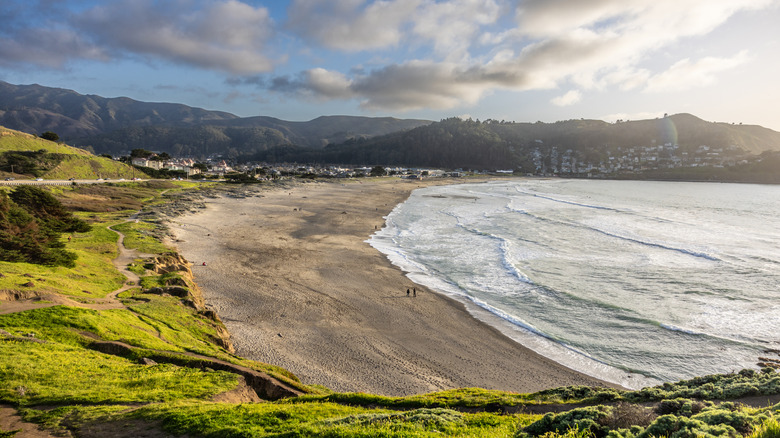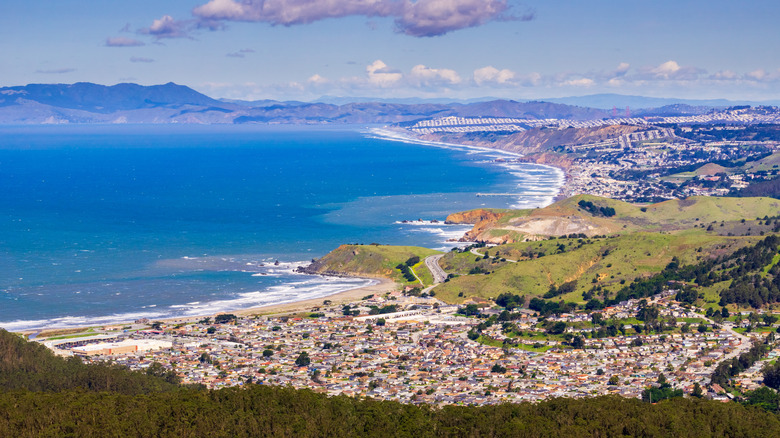This Popular Northern California Beach Is A Hotspot For Both Tourists And Bacteria
When it comes to choosing the state with the best beaches, voters tend to be split down east-west lines. Some argue it's Florida, where 800 miles' worth of beaches rub shoulders with some of the country's most iconic tourist destinations. California has an equally good claim to the crown, with surf havens like Huntington and sprawling expanses of golden-white sand like Zuma Beach in Malibu, described as "the ultimate southern California beach."
Whichever side of the divide you stand on, there are probably certain prerequisites for making a beach worth visiting: ample sunshine, good amenities, sand on which you recline and let the kids loose with a bucket and spade, and waters that are both clean and safe for swimming or surfing. What you don't want — nor expect — is to be swimming in water that could make you sick. Well, at Linda Mar Beach in Northern California's Bay Area, frequent high bacteria counts have become a prominent issue.
According to the Surfrider Foundation's most recent Clean Water Report, Linda Mar is one of the most polluted beaches in the country, with 71 percent of water samples showing high levels of bacteria (exceeding state standards for recreational water). It's a worrying statistic for a beach that welcomes around one million annual visitors. Of the 604 sites sampled across North America, only four beach locations — Park View in Miami Beach, Imperial Beach in San Diego, and Kahalu'u and Waikomo Stream in Hawaii — fared worse.
What does this mean for Linda Mar beachgoers?
Just 20 minutes south of San Francisco by car, Linda Mar Beach is close to a large population center and attracts everyone from local weekend beachgoers to visiting tourists. The exact source of the pollution is unclear as yet, though the Surfrider Foundation is set to conduct more tests further upstream in San Pedro Creek to better understand the issue. Theories have been posited, such as human sewage leaks, due to the beach's proximity to the Anza Pump Station water treatment facility, or horse manure from the area's ranches, carried into the water channels by stormwater. Current evidence suggests there may be multiple sources of pollution.
While it might be nauseating to think about what you could be swimming in, the bacteria also pose more tangible threats. Enterococcus, a prominent bacterial genus in human and animal waste, has been identified in the waters of Linda Mar. If exposed to high levels of the bacteria, people can suffer a variety of ailments, including flu-like symptoms, severe stomach aches, vomiting and diarrhea, and skin and eye infections. It's even possible that bacteria-laden waters could contribute to more problematic conditions like hepatitis.
Now that Linda Mar is considered one of the filthiest beaches in America, it begs the question of what authorities do to ameliorate the issue. Locals will surely welcome further testing. The Surfrider San Mateo County Blue Water Task Force has also teamed up with a coalition of environmental NPOs and local government to include more signage to inform the public of water conditions and conduct further investigations of the water treatment facility.

